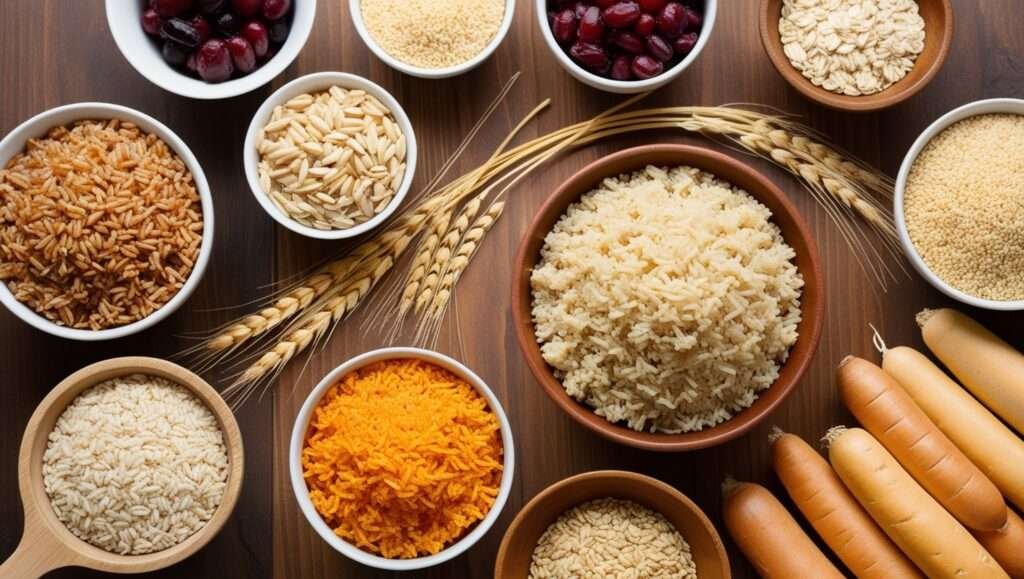Introduction to Uric Acid Reduction Diet and Its Impact on Health
In this article, we will learn about and gain knowledge about uric acid reduction diet. Uric acid is a natural byproduct of purine metabolism, which occurs when the body breaks down certain foods, particularly those rich in purines like red meat, organ meats, and some seafood. It is primarily produced in the liver and then filtered through the kidneys, where it is eventually excreted in urine. Under normal circumstances, uric acid plays a vital role in the body, functioning as an antioxidant that helps to protect cells from damage caused by free radicals. However, when levels of uric acid become excessively high, a condition known as hyperuricemia can develop.
Table of Contents

High uric acid levels can lead to a variety of health complications, the most well-known being gout, a form of arthritis characterized by sudden and severe pain, redness, and swelling in the joints. Gout occurs when uric acid crystals accumulate in the joint tissues, leading to intense discomfort and inflammation. Furthermore, elevated uric acid levels have been associated with other health concerns, such as kidney stones and potentially increasing the risk of cardiovascular diseases.
This highlights the significance of maintaining a healthy balance of uric acid in the body. Dietary choices play a pivotal role in this management process. While certain foods can elevate uric acid production, others can help mitigate its levels. A balanced diet focused on low-purine foods, adequate hydration, and avoiding excessive alcohol consumption is essential for individuals looking to lower their uric acid levels. By adopting specific dietary strategies, individuals can effectively manage their uric acid levels and promote overall health, setting the groundwork for a comprehensive approach to tackle future sections of this guide.
Understanding Uric Acid: Causes of High Levels
Elevated uric acid levels, a condition known as hyperuricemia, can arise from a variety of factors that include genetic predispositions, dietary choices, underlying medical conditions, and lifestyle habits. This condition occurs when the body produces too much uric acid or fails to eliminate it efficiently, leading to the accumulation of urate crystals, which may cause discomfort and health issues.
Genetics plays a significant role in how the body processes uric acid. Certain inherited traits can affect an individual’s ability to metabolize purines—complex organic compounds found in various foods and body tissues. A family history of hyperuricemia can increase the likelihood of developing elevated uric acid levels, highlighting the importance of understanding one’s genetic background in managing this condition.

Dietary choices are perhaps the most direct and controllable factor that impacts uric acid levels. Foods high in purines, such as red meats, organ meats, and some types of seafood, can contribute significantly to increased uric acid production. Additionally, the consumption of sugary beverages, especially those containing high-fructose corn syrup, has been linked to elevated uric acid levels. Conversely, foods rich in fiber, such as fruits and vegetables, may help mitigate these levels, serving as a crucial component of any diet aimed at reducing hyperuricemia.
Medical conditions also influence uric acid levels, with obesity, diabetes, hypertension, and kidney disease being significant contributors. Each of these conditions can affect the body’s ability to excrete uric acid properly. Lifestyle factors, including physical inactivity and excessive alcohol consumption, further exacerbate the issue, creating a multifaceted approach to managing uric acid levels.
Understanding these factors is essential for effectively managing and reducing uric acid levels through dietary modifications and lifestyle changes. Addressing each of these underlying causes will contribute to a comprehensive approach to health and well-being.
The Benefits of a Uric Acid Reduction Diet
A uric acid reduction diet plays a significant role in managing uric acid levels, particularly for individuals who experience conditions such as gout. By incorporating specific foods and excluding others, this dietary approach can lead to numerous health advantages. One of the primary benefits is the potential to lower uric acid levels in the bloodstream. Certain foods, such as cherries, citrus fruits, and whole grains, have been shown to inhibit the production of uric acid or facilitate its excretion. This can ultimately reduce the frequency and severity of gout attacks, providing relief for those affected by this inflammatory condition.

Additionally, a uric acid reduction diet promotes overall health through its emphasis on nutrient-rich foods. By prioritizing fruits, vegetables, lean proteins, and healthy fats, individuals can improve their nutritional intake while simultaneously managing their uric acid levels. Such a diet is often lower in purines, which are compounds that can elevate uric acid levels when consumed in excess. Foods like red meat, shellfish, and refined sugars should be minimized or avoided to ensure better health outcomes. This shift in dietary habits can lead to weight loss or maintenance, further alleviating the strain on joints and contributing to overall well-being.
Moreover, adopting a uric acid reduction diet can foster better lifestyle choices, such as increased hydration and physical activity. Staying well-hydrated aids in flushing out uric acid through the kidneys, while regular exercise enhances metabolic functions and helps in maintaining a healthy weight. By embracing this dietary approach, individuals not only tend to experience decreased symptoms related to high uric acid levels but can also enjoy the broader benefits of improved cardiovascular health and reduced risk of chronic diseases. As such, implementing a uric acid reduction diet can be a proactive step toward enhancing one’s overall quality of life.
Foods to Include in Your Uric Acid Reduction Diet
A well-designed uric acid reduction diet can significantly improve overall health and aid in managing conditions such as gout. Incorporating specific foods into your meals can promote lower uric acid levels. Here is a categorized list of beneficial food groups, along with their advantages and incorporation ideas. Foods to lower uric acid levels are include:
Fruits
Fruits are rich in vitamins and antioxidants that can help lower uric acid. Cherries, in particular, have been shown to reduce the risk of gout flare-ups. Other excellent choices include strawberries, blueberries, and apples. Incorporate these fruits into your breakfast by adding them to oatmeal, or enjoy them as snack options throughout the day.

Vegetables
Most vegetables are low in purines and can support uric acid reduction. Leafy greens, such as spinach and kale, broccoli, and bell peppers offer numerous nutrients while being low in calories. Aim to fill half your plate with vegetables during meals. They can be steamed, sautéed, or added to salads for increased flavor and nutrition.

Whole Grains
Whole grains like brown rice, quinoa, barley, and oats are excellent sources of fiber and can help maintain a healthy weight, which may reduce uric acid levels. Incorporate these grains into your diet by using them as a base for meals or adding them to soups and salads for extra texture.

Lean Proteins
When selecting proteins, opt for lean sources such as chicken, turkey, fish, and legumes. Fish like salmon and tuna provide omega-3 fatty acids which have anti-inflammatory properties. Incorporate these proteins into your meals by grilling, baking, or adding them to stir-fries and casseroles.

Healthy Fats
Incorporating healthy fats, such as olive oil, avocados, and nuts, can enhance your diet while contributing to uric acid reduction. These fats can be used in salad dressings or as toppings for various dishes. Opting for these nutrient-dense foods will not only benefit uric acid levels but also contribute to overall wellness.
Foods to Avoid: Triggering High Uric Acid Levels
Managing uric acid levels is crucial for maintaining overall health, particularly for individuals prone to conditions such as gout. Certain foods and beverages are known to trigger an increase in uric acid levels, and understanding these triggers is essential for those looking to adopt a uric acid reduction diet.

One of the primary categories of foods to limit is red meats. Meats such as beef, lamb, and pork are rich in purines, which are compounds that the body converts into uric acid. While consuming these proteins in moderation may be acceptable for some individuals, those with a history of elevated uric acid should consider reducing their intake to mitigate potential spikes.
Seafood, particularly certain varieties, also warrants attention when discussing foods to avoid. Shellfish, such as shrimp and crab, as well as oily fish like sardines and mackerel, can significantly contribute to increased uric acid levels. Patients are encouraged to replace these with lower-purine options such as chicken or vegetarian protein sources to maintain a balanced diet without risking excessive uric acid production.
Moreover, sugary beverages are notorious for their role in raising uric acid levels. Drinks sweetened with high fructose corn syrup, such as sodas and certain fruit juices, can lead to a rapid increase in uric acid. It is advisable to substitute these with water or unsweetened beverages to support hydration without the added sugar.
Alcohol consumption, particularly beers and spirits, should also be limited. Beer contains high levels of purines, while spirits can contribute to dehydration, further exacerbating the risk of elevated uric acid levels. Adopting moderate drinking habits or considering non-alcoholic alternatives may be beneficial.
In summary, avoiding or limiting these specific foods and beverages can play a vital role in maintaining healthy uric acid levels. By recognizing and making dietary adjustments, individuals can significantly improve their health outcomes and overall well-being.
Hydration and Uric Acid: The Importance of Water
Maintaining proper hydration is essential for managing uric acid levels in the body. Water plays a crucial role in the moderation of uric acid by helping to dilute this compound in the bloodstream. When dehydration occurs, the concentration of uric acid increases, which can lead to elevated levels that may cause health issues such as gout and kidney stones. Therefore, consuming an adequate amount of water daily can significantly aid in the prevention of these complications.

The benefits of drinking water extend beyond mere dilution of uric acid. Sufficient hydration supports kidney function, facilitating the efficient filtration and excretion of waste products from the body. When the kidneys are well-hydrated, they are better equipped to eliminate uric acid, reducing the likelihood of crystallization in the joints. It is generally recommended that individuals drink at least eight 8-ounce glasses of water per day, but this can vary based on individual needs, activity levels, and environmental conditions.
On the contrary, dehydration can have detrimental effects on health, particularly regarding uric acid levels. When the body is deprived of water, uric acid becomes more concentrated, potentially leading to painful conditions like gout. Symptoms of dehydration, such as fatigue, headaches, and dizziness, may also arise, further impairing an individual’s overall health. Therefore, it is prudent to remain conscious of one’s hydration levels throughout the day.
In light of these considerations, incorporating adequate hydration practices into daily routines is paramount. This may include drinking water consistently throughout the day, consuming fruits and vegetables with high water content, and avoiding excessive intake of caffeine and alcohol, which can contribute to dehydration. By prioritizing hydration, individuals can effectively assist in the management of uric acid levels and foster improved health.
Meal Planning for a Uric Acid Reduction Diet
Meal planning is a critical component for effectively managing uric acid levels through diet. The primary aim is to consume foods that lower uric acid while avoiding those that may raise it. Start by identifying foods that mitigate uric acid production, such as vegetables, whole grains, and low-fat dairy. Incorporating these foods into your meal plan can help maintain optimal health and reduce the risk of gout flares.

When developing your meal plan, consider creating a weekly menu that includes a variety of dishes, focusing on seasonal produce. Opt for recipes that emphasize a balance of fibrous vegetables and strongly encourage hydration by including plenty of water and herbal teas. For instance, a meal plan could feature breakfast options like oatmeal topped with berries, and lunches consisting of leafy green salads with a lean protein source, such as grilled chicken or tofu.
Additionally, meal prep can be highly beneficial in ensuring adherence to a uric acid reduction diet. Reserve a few hours each week to batch cook meals or prep ingredients. This practice not only saves time during busy weekdays but also minimizes the temptation to consume unhealthy options. For example, preparing vegetable stir-fries or quinoa salads in advance can serve as nutritious and satisfying meals that align with dietary goals.
Grocery shopping is another crucial aspect of meal planning. When visiting the grocery store, create a list that focuses on low-purine foods. Staying organized will help avoid impulse purchases that contradict your dietary needs. It’s advisable to shop the outer aisles where fresh produce, lean proteins, and whole grains are typically located, while minimizing visits to the processed food sections, which often contain high-purine options.
Tracking your meals through a food diary can also be a useful strategy. Recording what you eat helps identify patterns and allows for tailored adjustments based on your responses to specific foods. Following these principles will form a solid foundation for maintaining a uric acid reduction diet, ultimately leading to improved overall health.
Monitoring and Tracking Your Uric Acid Levels
Monitoring your uric acid levels is an essential aspect of managing your health, particularly if you are at risk of gout or other related conditions. Regularly tracking these levels allows you to make informed dietary choices and lifestyle adjustments that can facilitate uric acid reduction. Individuals can measure their uric acid levels through medical tests conducted by healthcare professionals, which typically involve a blood test. This test measures the concentration of uric acid in the bloodstream, providing valuable insights into an individual’s metabolic state.

In addition to clinical assessments, at-home monitoring has become increasingly popular among those seeking to manage their uric acid levels effectively. For instance, portable uric acid monitors are now available on the market, allowing individuals to conduct tests conveniently from the comfort of their homes. These devices typically operate by using a small blood sample obtained through a finger prick, yielding quick results that can effectively inform dietary decisions and track progress over time.
Keeping a daily food diary can be beneficial in tracking your diet and its relationship with uric acid levels. By documenting what you eat and noting any symptoms, such as joint pain or swelling, you can identify potential food triggers and make necessary adjustments. Many find that monitoring their diet helps them avoid high-purine foods, which are known to elevate uric acid levels, such as red meat, organ meats, and certain seafood. In this context, incorporating a variety of low-purine options, such as fruits, vegetables, and whole grains, becomes increasingly meaningful.
Additionally, there are various tools and resources available to assist individuals in their monitoring journey. Many mobile applications allow users to log their food intake and track their uric acid levels over time. These digital solutions often come equipped with nutrition databases, recipes, and reminders, thus enhancing users’ ability to maintain a low uric acid diet effectively. Monitoring is a continuous process that empowers individuals to take charge of their health and improve their overall well-being.
Conclusion: Embracing a Healthier Lifestyle
In conclusion, adopting a uric acid reduction diet is an essential step toward better health and overall well-being. As discussed throughout this guide, maintaining balanced uric acid levels is crucial for preventing gout and reducing the risk of other health issues, including kidney stones and cardiovascular diseases. By being mindful of our food choices, we can effectively manage our uric acid levels, leading to a more vibrant and energetic life.
A balanced diet that emphasizes low-purine foods, such as fruits, vegetables, whole grains, and lean proteins, provides the body with the nutrients it needs while minimizing uric acid production. It is equally important to limit the intake of high-purine foods, which can exacerbate uric acid buildup. Consuming ample water and staying hydrated also plays a significant role in flushing out excess uric acid from the body. Furthermore, maintaining a healthy weight through portion control and regular physical activity can significantly impact uric acid levels and overall health.
Integrating these dietary changes does not have to be overwhelming. Begin by gradually modifying your eating habits, introducing new recipes that fit within the framework of a uric acid reduction diet. Engaging with a healthcare professional or a nutritionist can provide valuable guidance tailored to individual needs, ensuring a well-rounded approach to health improvement. Ultimately, prioritizing these dietary alterations is an investment in your long-term wellness and vitality.
Embracing a uric acid reduction diet can lead to significant positive changes in your lifestyle. By committing to these dietary modifications, you pave the way towards disease prevention while enhancing your overall quality of life. Strive for balance, stay informed about your dietary choices, and take this journey toward improved health seriously. With perseverance and dedication, you can achieve lasting benefits and enjoy a healthier tomorrow.
FAQs about Uric Acid Reduction Diet
Many individuals considering a uric acid reduction diet often have pressing questions regarding its implementation and effectiveness. A common query is about the timeframe for seeing results from this dietary approach. Typically, individuals may start to notice a decrease in symptoms related to high uric acid levels, such as joint pain and inflammation, within just a few weeks. However, it is important to understand that the complete normalization of uric acid levels may take longer and varies from person to person based on adherence to the diet and individual metabolism.
Another frequently asked question pertains to the connection between weight loss and uric acid levels. Excess body weight is known to contribute to elevated uric acid levels, as adipose tissue produces more uric acid and impairs its excretion. Therefore, adopting a uric acid reduction diet often coincides with weight loss, which can subsequently lead to lower uric acid levels. By prioritizing a healthy weight through balanced nutrition, individuals may experience dual benefits—Improved general health alongside decreased uric acid levels.
Maintaining a uric acid reduction diet during social events is also a concern for many. It can be challenging to navigate menus and food options in social situations without jeopardizing dietary goals. A practical approach is to plan ahead by reviewing menus before attending events, communicating dietary preferences to hosts, or bringing your own healthy dishes. Additionally, choosing foods like vegetables, whole grains, and lean proteins while avoiding purine-rich items can facilitate making healthier choices, even in social settings.
These common inquiries shed light on the efficacy and practicality of a uric acid reduction diet. With the right strategies and understanding, individuals can effectively manage their uric acid levels and improve their overall health.


